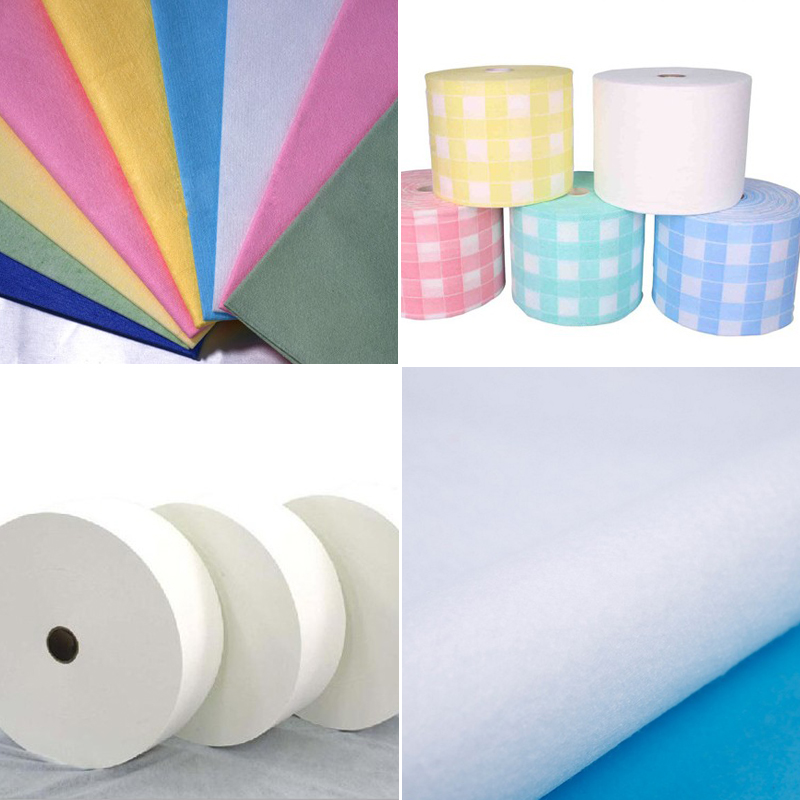Spunlace Nonwoven Fabric introduction
The oldest technique for consolidating fibers in a web is mechanical bonding,which entangles the fibers to give strength to the web .
Under mechanical bonding, the two most widely used methods are needlepunching and spunlacing.
Spunlacing uses high-speed jets of water to strike a web so that the fibers knot about one another. As a result, nonwoven fabrics made by this method have specific properties, as soft handle and drapability.
Japan is the major producer of hydroentangled nonwovens in the world. The output of spunlaced fabrics containing cotton was 3,700 metric tons and a significant growth in production can still be seen .
Since the 1990's, the technology has been made more efficient and affordable for more manufacturers. Majorities of hydroentangled fabrics have incorporated dry-laid webs (carded or air-laid webs as precursors).
This trend has changed very recently with an increase in wet-laid precursor webs. This is because of Dexter making use of Unicharm's technology to make spunlaced fabrics using wet-laid fabrics as precursors .
So far, there are many different specific terms for spunlaced nonwoven like jet entangled, water entangled, and hydroentangled or hydraulically needled. The term, spunlace, is used more popularly in the nonwoven industry.
In fact, the spunlace process can be defined as: the spunlace process is a nonwovens manufacturing system that employs jets of water to entangle fibers and thereby provide fabric integrity. Softness, drape, conformability, and relatively high strength are the major characteristics that make spunlace nonwoven unique among nonwovens.
Non woven spunlace fabric rolls
Spunlace Nonwoven Fabric Choice OF Fibers
The fiber used in spunlaced nonwoven should think about following fiber characteristics.
Modulus: Fibers with low bending modulus requires less entangling energy than those with high bending modulus.
Fineness: For a given polymer type, larger diameter fibers are more difficult to entangle than smaller diameter fibers because of their greater bending rigidity.
For PET, 1.25 to 1.5 deniers appear to be optimum.
Cross section: For a given polymer type and fiber denier, a triangular shaped fiber will have 1.4 times the bending stiffness of a round fiber.
An extremely flat, oval or elliptical shaped fiber could have only 0.1 times the bending stiffness of a round fiber.
Length: Shorter fibers are more mobile and produce more entanglement points than longer fibers. Fabric strength, however, is proportional to fiber length;
Therefore, fiber length must be selected to give the best balance between the number of entanglement points and fabric strength. For PET, the fiber length from 1.8 to 2.4 seems to be best.
Crimp: Crimp is required in staple fiber processing systems and contributes to fabric bulk. Too much crimp can result in lower fabric strength and entanglement.
Fiber wetability: Hydrophilic fibers entangle more easily than hydrophobic fibers because of the higher drag forces.
Content transferred from: leouwant
spunlace nonwoven fabric suppliers
Jinhaocheng Nonwoven Co., Ltd. is a Chinese manufacturer specializing in the production of spunlace nonwovens.Interested in our factory, please contact us.
Post time: Mar-28-2019

